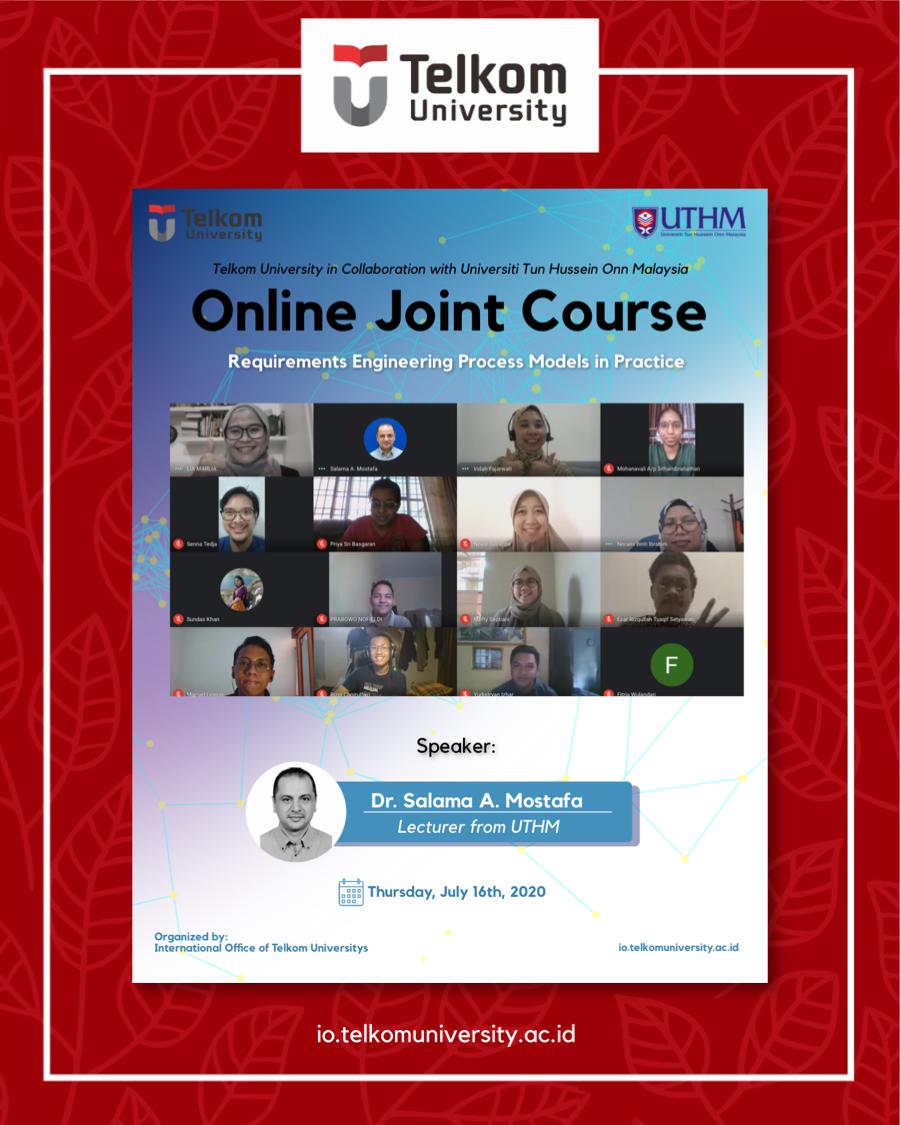
Requirements Engineering Process Models in Practice, Online Joint Course Telkom University & UTHM
Requirements Engineering Process Models in Practice, Online Joint Course Telkom University & UTHM. The 4th Online Session Joint Class between Telkom University and Universiti Tunn Hussein Onn Malaysia (UTHM) with the topic: “Requirements for Process Engineering Modeling in Practice” was successfully carried out today, July 16th, 2020. Today’s class is the sequel to 1st session which previously only discussed a general review of engineering requirements. Salama A. Mostafa, a UTHM lecturer, presented a variety of models used in the requirements engineering process.
According to Dr. Salama explanation, requirements engineering process may vary widely from one developer to another, depending on the application domain, the people involved and the organization developing the requirements. There are a spiral requirements engineering process model by Boehm 1986, a linear requirements engineering process model by Kotonya & Sommerville 1998, and an iterative requirements engineering process model by Loucopoulos & Karakostas 1995. Nonetheless, at least, there are 4 steps that are common to all requirement engineering process models, including:
- Requirements Elicitation
- Requirements Specification
- Requirements Validation
- Requirements Management
Requirement Elicitation which is usually called requirement discovery involves technical staff working with customers to find out about the application domain, the services that the system should provide and the system’s operational constraints, hardware constraints, other systems, and etc. This activity includes requirements discovery, requirements classification and organization, requirements prioritization and negotiation, and requirement specification. In the process of those activities, formal or informal interview with the stakeholders is applied. To make the interview effective, consider these tips:
- Be open minded, avoid pre-conceived ideas about the requirements and be willing to listen to stakeholders.
- Prompt the interview to get decissions going, using a springboard question, a requirements proposal, or by working together on a prototypes system.
Likewise, don’t forget to make software requirements document. It is the official statement of what is required of the system developers which should include both a definition of user requirements and a specification of the system requirements. Besides, it should set of WHAT the system should do rather than HOW it should do it. After all set, go to the requirements validation by checking the validity, consistency, completeness, realism, and verifiability. It may use requirements review technique, prototyping technique, and test-case generation technique. Those are the knowledge shared by Dr. Salama in today’s class. Hopefully it enriches our knowledge to keep updated with the trends. See you on next Online Joint Course! (IO)***
